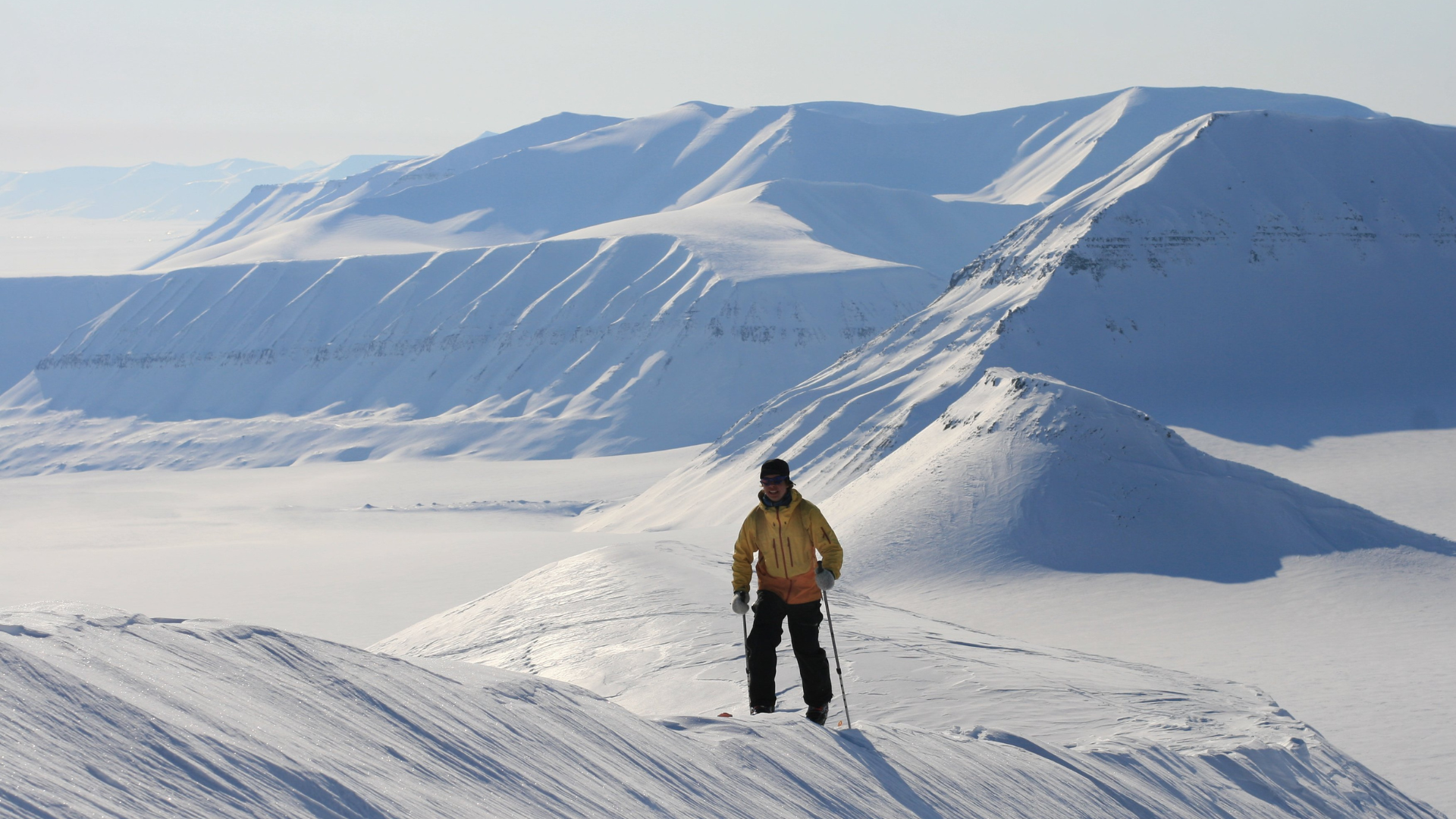Urban Walks and Short Hikes from Longyearbyen
Urban Walks and Short Hikes from Longyearbyen

You don’t need skis, snowmobiles, or expedition gear to experience the Arctic—sometimes, all it takes is a good pair of boots. Longyearbyen, Svalbard’s main settlement, offers a rare chance to explore the high Arctic on foot. With accessible trails, striking landscapes, and fascinating remnants of local history just beyond the town limits, walking here becomes a powerful and immersive way to connect with the polar environment.
Walking through Longyearbyen itself is a rewarding introduction to Arctic life. The town’s compact layout makes it easy to explore on foot, with colorful houses, quirky art installations, and views of Adventfjorden never far from sight. Along the way, you'll pass the world’s northernmost post office, a university focused on Arctic studies, and locals commuting on snowmobiles. Every corner reveals something unexpected—from weather-worn coal mining structures to polar bear warning signs on the town’s edges.
One of the most popular urban walks is to the Svalbard Church and on to the historic Nybyen area. This short, gentle uphill route offers a peaceful vantage point over the valley, and it’s common to spot reindeer grazing near the trail. The church itself is open and welcoming, often with candles lit and warm coffee inside. Nybyen, once miners’ barracks, now hosts artist studios, simple accommodation, and a quiet Arctic atmosphere perfect for reflection or photography.
For those looking to stretch their legs beyond the town center, the walk to Mine 7 viewpoint is a favorite. Starting from the outskirts of Longyearbyen, the trail follows a gravel road past a dramatic landscape of moraine hills, icy streams, and rocky plains. While Mine 7 itself is an active coal mine and not open to visitors, the area surrounding it offers stunning photo opportunities and a real sense of Svalbard’s industrial legacy amid wilderness.
Another classic is the walk out to the Global Seed Vault, one of the most iconic structures in the Arctic. While the vault is closed to the public, its mysterious and futuristic entrance—carved into the side of a snowy mountain—makes for a striking destination. The walk there, about 1.5 hours round-trip, is straightforward but dramatic, with wide views over the valley and glacier-streaked mountains beyond.
Plenty of short hikes radiate from the town as well, like the route up Platåfjellet. Though steeper than an urban walk, this half-day trek is accessible for most visitors in summer and rewards you with panoramic views over Longyearbyen and the surrounding fjord. It’s one of the best places to understand the scale and isolation of the Arctic, with nothing but ice, stone, and sky in every direction.
Hiking and walking in Svalbard come with responsibilities. You must stay within the safety zone around Longyearbyen unless you are accompanied by a certified guide or are carrying a rifle for polar bear protection—required by law. Weather changes rapidly, and even short distances can become treacherous without the right gear. Always check local forecasts and talk to your guide or hotel staff before setting out.
Spring and summer are the ideal times for walking, with snow retreating from the lower hills and the Midnight Sun offering 24-hour daylight. In winter, walking becomes more limited, but snow-cleared urban paths still allow for meaningful exploration on foot. Whether you’re strolling to the museum or stepping out onto a gravel trail, each walk is its own Arctic experience.
Walking in Svalbard strips the experience back to its essence. There are no engines humming or skis gliding—just the crunch of boots on frost, the sharp air in your lungs, and the endless white silence stretching out before you. It’s an intimate way to experience the Arctic—slow, mindful, and close to the land.











